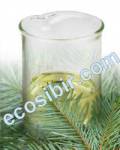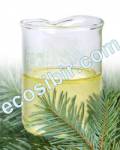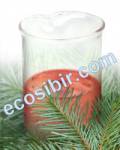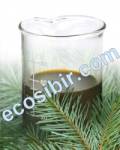Siberian Fir natural products (abies sibirica)

Siberian Fir (Abies sibirica) is a coniferous evergreen tree. It is very shade-tolerant, frost-resistant, and hardy, surviving temperatures down to −50 °C. The bark is grey-green to grey-brown and smooth with resin blisters typical of most firs. Shoots are yellow-grey, resinous, and slightly pubescent. The leaves are needle-like, 2-3 cm long and 1.5 mm broad on average. They are light green above with two grey-white stomatal bands underneath, and are directed upwards along the stem. They are soft, flattened, and strongly aromatic. Atmospheric pollution severely affects Siberian fir and stands of such trees can be used to gauge the level of pollution in any place.
Resin of Siberian fir is called oleoresin or Siberian Fir balsam. Oleoresin contains 30% essential oils and 70% resin. Get out of it turpentine, alcohol, resins, used in its pure form for therapeutic purposes. Fir needles contain 1,5-3,0% essential oils. In fresh needles of about 300 mg% of ascorbic acid. In the wood was found to 4.2% essential oil containing up to 80-85% camphor; in the roots also contain essential oils (8%), major components are camphor, safrole, and cineole. In addition to camphor in essential oils of plants are contained camphene, bisabolene, camphogen and organic acids. In seeds found a large amount of solid fatty oil, which contain glycerides of lauric and oleic acids and vitamin E.











